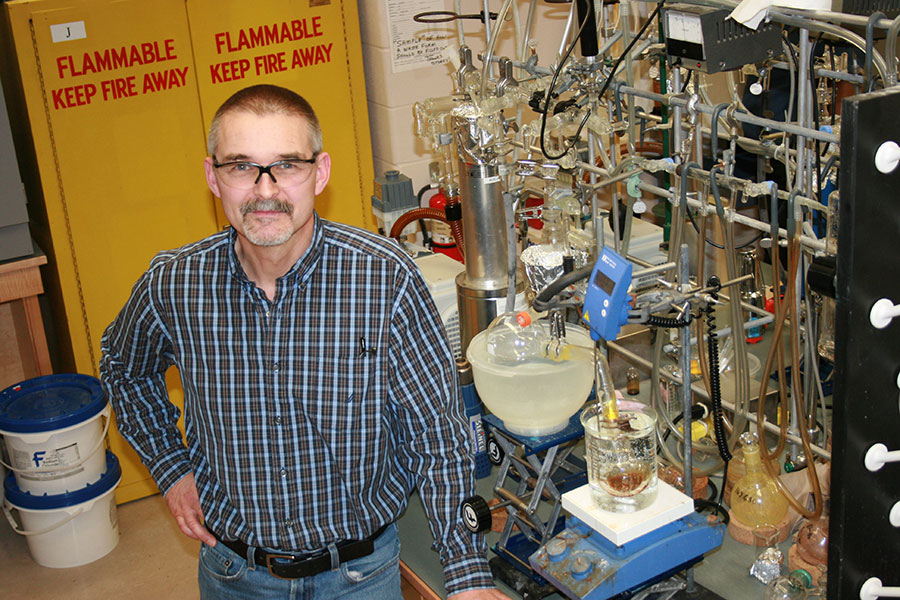Making polymers with metal
For polymer chemists, the periodic table is a cupboard full of ingredients most of which never get pulled off the shelf. Chemistry professor Jens Müller is working to change that.
By Michael Robin "We are surrounded by polymers, and our modern world would be completely different without them," he said, adding that most of these polymers are made up of a handful of elements. "The main elements are carbon, oxygen, nitrogen and then a few others. It's less than five, but we have more than a hundred elements, and most of them are metals."
"We are surrounded by polymers, and our modern world would be completely different without them," he said, adding that most of these polymers are made up of a handful of elements. "The main elements are carbon, oxygen, nitrogen and then a few others. It's less than five, but we have more than a hundred elements, and most of them are metals."
Müller first provided a primer on polymers, which are molecules with simple repeating units and are among the most useful and ubiquitous materials on Earth. Natural polymers include cellulose—the molecule that gives plant stems and wood their strength—and DNA, the stuff of life. Synthetic polymers include polyethylene, polystyrene and polyvinyl chloride used to make plastics.
In contrast, research into polymers that contain metals—metallopolymers—is relatively new, with important developments in the field beginning in the 1990s. Müller and his research team work on a class of iron-containing chemicals called ferrocenes. So far, they have successfully used aluminum and gallium to create polymers and are currently incorporating other elements as well.
Müller's interest in metallopolymers is based on a common property of metals: they come in different "flavours" or oxidation states. This means they can lose one or more electrons, which changes their properties. Once they get the electrons back, they revert back to their original state.
This opens up exciting possibilities for "smart" materials with properties that could be useful in a wide range of areas, from semiconductors in electronics to information storage, photovoltaic cells and chemical processing.
The work of Müller and six PhD students is at an earlier stage. They are developing monomers—the small molecules that are linked together to make a polymer. A useful analogy is LEGO blocks, in that different shapes and sizes of blocks make different projects possible.
"That's the creative part, where you have to come up with ways to change this or that in the molecule, make it bigger, make it smaller, make it more negative, more positive, based on the answer you got from your first generation of compounds," he explained. "Then you test your idea out, and if you understood what the molecules told you, you will lift their properties up to the next step, depending on where you want to go."
Müller said that the behaviour of each metallopolymer will differ, depending on what metal is incorporated.
"That is what we are further developing," he said. "Making possible more starting monomers gives us more options to produce different polymers and see what they can do."

